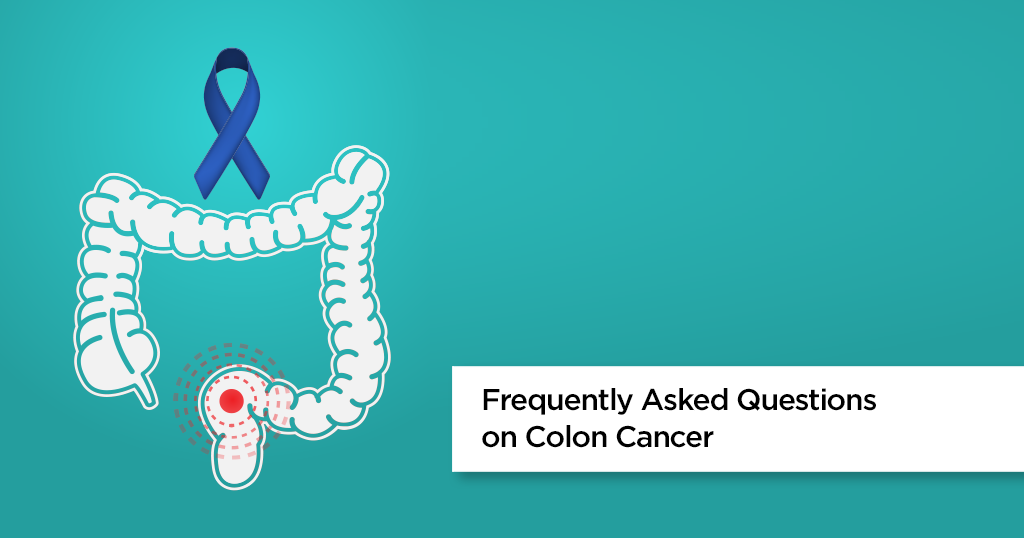Parkinson’s Disease


Overview
Parkinson’s disease is a neurodegenerative disease that manifests as a movement disorder. The main features of Parkinson’s disease are a progressive loss of muscle control leading to trembling of the head and limbs at rest, slowness, stiffness, and impaired balance. As symptoms worsen, it becomes difficult to talk, walk and complete simple tasks.
The progression of the disease and the degree of injury differ from person to person. Many persons with Parkinson‘s disease may live long, productive life, while others become disabled more quickly.
Complications of Parkinson’s are pneumonia or injuries due to falls leading to premature death of the person. The life expectancy of people with and without Parkinson’s disease is about the same as the general population.
Persons who develop Parkinson’s disease are usually above 60 years of age. Since overall life expectancy is rising, the number of individuals with Parkinson’s disease will increase in the future. Though the adult-onset disease is more common, early-onset Parkinson’s disease (onset between 21-40 years) and juvenile-onset Parkinson’s disease (onset before age 21) can also occur.
Historically, Parkinson’s disease was reported 5000 BC ago in the ancient Indian civilization. It was known as Kampavata and was treated with plant seeds which have therapeutic levels of levodopa. Parkinson’s disease is named after James Parkinson, a British doctor, who first described the disorder as “shaking palsy.”
Stages of Parkinson’s Disease
Stage 1: Mild signs and symptoms. For example, while walking there is a swinging arm or tremors occur on one side of the body, and it does not interfere with daily activities.
Stage 2: Both sides of the body are affected, and symptoms worsen. Though the individual is able to perform daily activities, symptoms may interfere with walking and posture.
Stage 3: Symptoms are significantly worse. It cause slowness of movement, loss of balance and increase the frequency of falls.
Stage 4: Symptoms are severe and the patient requires help as it is impossible for the person to live alone.
Stage 5: The person is unable to walk or stand, and sometimes bedridden do have hallucinations and delusions.
Request an appointment at Apollo Hospitals
Causes
- In Parkinson’s disease, nerve cells (neurons) in the brain progressively break down or die. The chemical messenger in the brain known as dopamine is decreased due to a loss of neurons that produce it. When there is a decline in dopamine levels, it leads to abnormal brain activity causing the signs and symptoms of Parkinson’s disease.
- The exact cause is unknown, and several factors are known to play a role in causing the disease.
- Genes: In most individuals, Parkinson’s disease is idiopathic, which means that it arises sporadically with no known cause. However, some persons diagnosed with Parkinson’s may have a family member with this condition. Several genes are connected with the disorder. Knowing these genes helps to find the cause of Parkinson’s disease.
- Environmental triggers: Environmental factors or toxins increase the risk of Parkinson’s disease.
- Many changes are known to occur in the brains of people with Parkinson’s disease. These changes include:
- The presence of Lewy bodies: Clumps of specific substances within the brain cells which are microscopic markers of Parkinson’s disease are called Lewy bodies. Researchers believe these Lewy bodies hold an important clue to the cause of Parkinson’s disease. A natural protein called alpha-synuclein (A-synuclein) is found in all Lewy bodies in a clumped form.
Symptoms
The primary symptoms usually start on one side of the body and are related to voluntary and involuntary motor function. Mild symptoms are present in the beginning and will improve over time. By the time that primary symptoms appear, individuals with Parkinson’s disease will have lost 60% to 80% or more of the dopamine-producing cells in the brain. Most of the important motor symptoms include the following:
- Tremors: Trembling in hands, arms, fingers, legs, feet, jaw, or head. The person usually has resting tremors but not while involved in a task. Tremors usually worsen when the person is tired, excited or stressed.
- Rigidity: The limbs and trunk become stiff, which increase during movement. Rigidity usually causes muscle pain and aches. Cramped handwriting (micrographia) occurs due to loss of fine hand movements and lead to difficult in eating.
- Bradykinesia: The voluntary movements become slow. After sometime, it becomes difficult to initiate movements. An expressionless mask-like facies also occurs.
- Postural Instability: Due to lost or impaired reflexes it becomes difficult to change posture or maintain balance. Instability in the Posture may lead to falls.
- Parkinsonian Gait: Persons with more progressive Parkinson’s disease usually have a characteristic shuffling walk with an arched position and a diminished or absent arm swing. It becomes difficult to start walking and to make turns. Individuals may freeze in mid-stride and appear to fall forward while walking.
Other symptoms of Parkinson’s disease
The foremost symptoms of Parkinson’s disease are a progressive loss of muscle control. Damage to the brain leads to secondary symptoms. These vary in severity, and not every individual will experience all of them. The symptoms usually start on one side of the body;
Some of the secondary symptoms include
- Insecurity, Anxiety, and stroke
- Memory loss, Confusion, and dementia (more common in elderly individuals)
- Depression
- Constipation
- Excessive salivation and difficulty swallowing
- Sense of smell is reduced
- Sweating increases
- Erectile dysfunction in males
- Skin problems
- Quieter speech, slowed and monotone voice
- Urinary frequency or urgency
Risk Factors
The risk factors for Parkinson’s disease are :
- Age: Parkinson’s disease is rarely seen in young adults. It mostly begins in middle and late life, and aging increases the risk. People develop the disease at age 60 or above.
- Heredity: The person with a close relative having Parkinson’s disease has a higher chance of developing this condition.
- Sex: Women are less prone to this condition when compared to men
- Exposure to Toxins: Exposure to pesticides and herbicides put you at increased risk of Parkinson’s disease.
Diagnosis
Early and accurate diagnosis of Parkinson’s disease with good treatment strategies is important to maintain a high quality of life. There is no particular test to diagnose Parkinson’s disease. In the early phase, diagnosis of Parkinson’s disease is challenging as there are similarities to other movement disorders. Misdiagnosed may cause persons with Parkinson-like symptoms to be inaccurately diagnosed as having Parkinson’s disease. It is therefore important to re-evaluate the individual on a regular basis in the early phase to rule out other conditions that are responsible for the symptoms.
A neurologist is required to make an accurate diagnosis. An initial assessment is done based on the history, a neurological examination, and the symptoms. In the medical history, it is essential to know if any family member is suffering from the disease, intake of any medication and was there any exposure to toxins or traumatic brain injury. A neurological exam helps in the evaluation of walking, coordination and fine motor tasks involving the hands.
Tests are used to measure behavior, mental capacity, daily living activities, and mood and motor functions. They are useful in initial diagnosis and to rule out any other disorders, as well as in monitoring the progression of the disease to make therapeutic adjustments. Brain scans and other laboratory tests are used to detect other disorders similar to Parkinson’s disease.
The diagnosis of Parkinson’s disease is done if
- Two of out of any three major symptoms are present: Muscle rigidity, tremors at rest and slowness of movement
- Secondary causes such as medication or stroke in the area controlling movement must be ruled out. Symptoms significantly improve with levodopa.
Request an appointment at Apollo Hospitals
Treatment
There is no cure for Parkinson’s disease currently, but treatments are available to help reduce the symptoms & maintain quality of life.
These treatments involve:
- Supportive therapies, such as physiotherapy
- Medication
- Surgery (for some people)
The person may not require any treatment during the early stages of Parkinson’s disease as symptoms are usually mild. However, the person may need regular appointments with a specialist so that condition can be monitored.
A care plan should be developed with the healthcare team and the patient’s family. The plan will outline the treatments and what are likely needs in the future and should be reviewed regularly.
1) Supportive therapies
Physiotherapy: A physiotherapist can help to reduce muscle stiffness & joint pain through movement (manipulation) and exercise. The physiotherapist aims to make moving easier & improve your walking & flexibility. They also try to increase the fitness levels & ability to manage daily chores.
Occupational Therapy: An occupational therapist can identify areas of difficulty in everyday life – for example, dressing or getting to the local shops. They can help to work out practical solutions like ensuring that the home is safe & properly set up for the person. This will help maintain the person’s independence for as long as possible.
Speech & Language Therapy: Many people with Parkinson’s disease have swallowing difficulties (dysphagia) and problems with their speech. A speech & language therapist can often help to improve these problems by teaching speaking & swallowing exercises, or by providing assistive technology.
Diet Advice: For some people with Parkinson’s disease, making dietary changes can help improve some symptoms. These changes can include:
- Increasing the amount of fiber in the diet and making sure the person is drinking enough fluid to reduce constipation.
- Increasing the amount of salt in the diet and eating small, regular meals to avoid problems with low blood pressure and dizziness.
- Making changes to the diet to avoid accidental weight loss.
The person may need a dietitian: a healthcare professional trained to give diet advice and may benefit from modifying your diet.
2) Medication
Medications are used to improve the main symptoms of Parkinson’s disease like shaking & movement problems.
However, not all the medications available are useful for everyone & the short- and long-term effects of each are different. Three main types of medicines are used:
- Levodopa
- Dopamine agonists
- Monoamine oxidase-b inhibitors
Your specialist can explain your medication options, including the risks associated with each medication & discuss which may be best for you. Regular reviews will be required as the situation progresses & your needs change.
Levodopa
- Most people with Parkinson’s disease eventually need a medication called levodopa.
- The nerve cells in the brain absorb levodopa and turn it into the chemical dopamine, which is used to carry messages between the parts of the brain & nerves that control movement.
- Increasing the levels of dopamine using levodopa normally improves movement problems.
- It is taken in the form of a tablet or liquid & is usually combined with other medication, such as benserazide or carbidopa. These medicines stop the levodopa to broken down in the bloodstream before it gets into the brain.
They also reduce the side effects of levodopa, which include:
- Vomiting or Feeling sick (nausea)
- Dizziness
- Tiredness
If the person is prescribed levodopa, the initial dose is usually small & will be steadily increased until it takes effect. At first, levodopa causes a dramatic improvement in the symptoms. However, its effects can be decline over the following years as more nerve cells in the brain are lost. This means the dose may need to be increased from time to time.
Long-term use of levodopa is also connected to problems such as uncontrollable jerky muscle movements (dyskinesias) & “on-off” effects, where the person rapidly switches between being able to move (on) & being immobile (off).
Dopamine agonists
Dopamine agonists act as a replacement for dopamine in the brain & have a similar but milder effect compared with levodopa. They can often be given less often than levodopa. They are usually taken as a tablet but are also available as a skin patch. Sometimes dopamine agonists are used at the same time as levodopa, as this allows lower doses of levodopa to be used.
Possible side effects of dopamine agonists include:
- Nausea or vomiting
- Tiredness & sleepiness
- Dizziness
Dopamine agonists can also cause hallucinations & increased confusion, so they need to be used with caution, particularly in elderly patients, who are more sensitive.
For some people, dopamine agonists have been associated with the development of compulsive behaviors, especially at high doses, including addictive gambling & an excessively increased libido.A potentially serious but uncommon, complication of dopamine agonist therapy is sudden onset of sleep. This happens as the dose is being increased & tends to settle once the dose is stable. People are usually informed to avoid driving while the dose is being raised in case this complication occurs.
As the person themselves may not realize the problem, it is necessary that carers & family members also note any abnormal behavior & discuss it with an appropriate professional at the earliest opportunity.
If the person is given a course of dopamine agonists, the starting dose is usually very small to prevent nausea & other side effects. The dosage is progressively increased over a few weeks. If nausea becomes a problem, the general physician may prescribe anti-sickness medication.
Monoamine oxidase-B inhibitors
Monoamine oxidase-B inhibitors, including selegiline & rasagiline, are alternative to levodopa for treating early Parkinson’s disease.
They block the enzyme that breaks down dopamine (monoamine oxidase-B), increasing dopamine levels.
Both selegiline & rasagiline can improve the symptoms of Parkinson’s disease, although their effects are small compared with levodopa. They can be used along with levodopa or dopamine agonists.
MAO-B inhibitors are very well tolerated, but can occasionally cause side effects, including:
Nausea
- A headache
- Abdominal pain
- High blood pressure
- Catechol-O-methyltransferase inhibitors:
- Catechol-O-methyltransferase (COMT) inhibitors are prescribed for people in later stages of Parkinson’s disease. They prevent levodopa from being cut down by the enzyme COMT.
- Side effects of COMT inhibitors include:
- Nausea or vomiting
- Diarrhoea
- Abdominal pain
Apomorphine
A dopamine agonist called apomorphine can be injected under the skin (subcutaneously) either by:
- A single injection, when required or
- A continuous infusion using a small pump carried around on your belt, under your clothing, or in a bag.
Duodopa
If the person has severe on-off fluctuations, a type of levodopa called Duodopa may be used. The medication comes as a gel that is continuously pumped into the gut through a tube inserted through the abdominal wall.
3) Surgery
Most people with Parkinson’s disease are treated with medication, although a type of surgery called deep brain stimulation is used in some cases.
Deep brain stimulation
Deep brain stimulation involves surgically implanting a pulse generator similar to a heart pacemaker. This is linked to one or two fine wires placed under the skin & are inserted precisely into specific areas of your brain. A tiny electric current is generated by the pulse generator, which runs through the wire & stimulates the part of your brain which is affected by Parkinson’s disease. Though surgery doesn’t cure Parkinson’s disease, it can ease the symptoms for some people.
FAQs
1) What are the stages of Parkinson’s disease?
Stage 1: mild signs (movement symptoms while walking there is a swinging arm or tremors ) occur on one side of the body, and it does not interfere with daily activities.
Stage 2: Both sides of the body are affected, and symptoms worsen.
Stage 3: Symptoms worsen with the slowness of movement and loss of balance.
Stage 4: symptoms are severe and require help as it is impossible for the person to live alone.
Stage 5: The person is unable to walk or stand, and sometimes bedridden.
2) What is the treatment for Parkinson’s disease?
Medications, surgery and physiotherapy can control symptoms of Parkinson’s disease
3) Is Parkinson’s a fatal disease?
Though Parkinson’s disease (PD) reduce longevity, it is not fatal a condition.
4) Can stress cause Parkinson like symptoms?
Parkinson’s disease symptoms worsen during times of stress.
5) What are the risk factors for Parkinson’s disease?
Risk factors for Parkinson’s disease include age, heredity, sex and exposure to toxins.
Apollo Hospitals has the Best Neurologist in India. To find the best Neurologist doctors in your nearby city, visit the links below:
© Copyright 2024. Apollo Hospitals Group. All Rights Reserved.
 +91 8069991061
Book Health Check-up
Book Health Check-up
Book Appointment
Book Appointment
+91 8069991061
Book Health Check-up
Book Health Check-up
Book Appointment
Book Appointment







